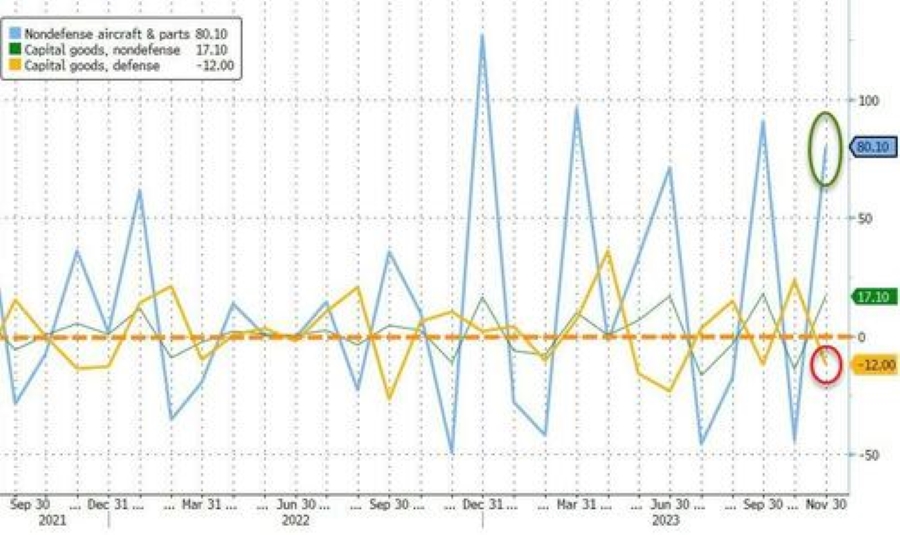The economic news that helps shape expectations of what to expect in the months and years ahead has been mercurial but, overall, steadily improving throughout the last half of 2023; the last few months within the U.S. durable goods category saw orders surge 5.4% month-over-month in November.
The jump translates into year-over-year order growth up 10.1% — the highest since May 2022. The November numbers, published on Dec. 22 by the U.S. Census Bureau, also contain an 800-pound gorilla of a caveat: The surge in orders was primarily based on non-defense aircraft & parts orders, which surged 80.1% month-over-month. As one analyst at ZeroHedge asked rhetorically, “As goes Boeing, so goes the S&P 500?”
 Durable goods are consumer goods that are expected to last for at least three years. They are expensive and don't wear out quickly, so consumers don't buy them often. Examples of durable goods include cars, home appliances, consumer electronics, furniture, sports equipment, firearms, toys, machinery and equipment, steam shovels, tanks, and airplanes.
Durable goods are consumer goods that are expected to last for at least three years. They are expensive and don't wear out quickly, so consumers don't buy them often. Examples of durable goods include cars, home appliances, consumer electronics, furniture, sports equipment, firearms, toys, machinery and equipment, steam shovels, tanks, and airplanes.
The Bureau of Economic Analysis classifies durable goods into three types:
- Consumer durable goods
- Business durable goods
- Nondurable goods
Economists monitor the consumption of consumer durables because it's considered a good indicator of the economy's strength. When durable goods are selling well, it generally indicates a positive economy.
Core capital goods shipments, a figure that is used to help calculate equipment investment in the government’s gross domestic product report, declined for the second month in a row, dragging year-over-year growth down to +1.0%, still a modest increase.


Report Abusive Comment